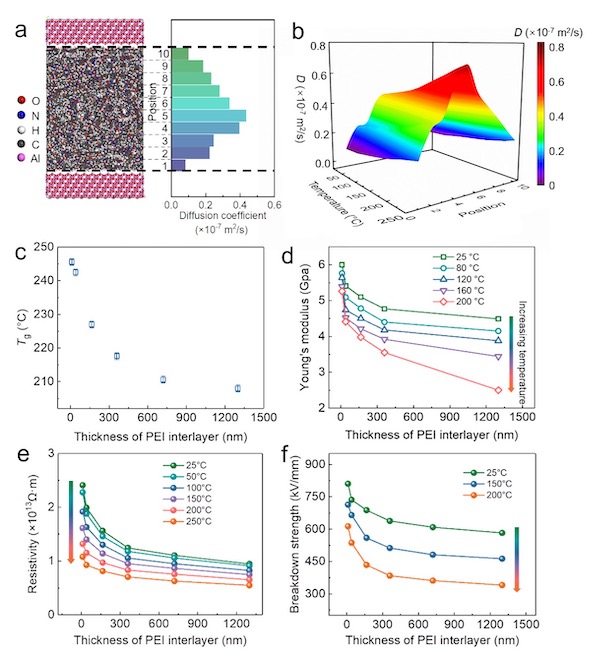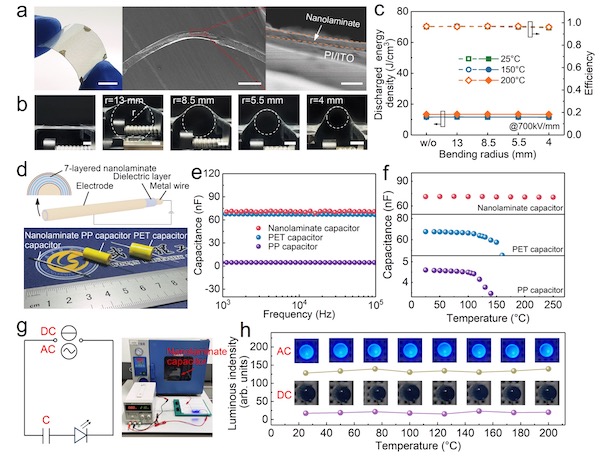Recently, Professor Xin Zhang’s research group (International School of Materials Science and Engineering, also known as the School of Materials and Microelectronics, and the State Key Laboratory of Advanced Technology for Materials Synthesis and Processing) at Wuhan University of Technology (WUT) achieved a significant breakthrough in high-temperature composite dielectric energy storage materials. Their study, titled “High-Temperature Capacitive Energy Storage in Polymer Nanocomposites through Nanoconfinement,” was published in Nature Communications(2024, 15, 6655).
WUT is listed as the first-affiliated institution, with doctoral student Li Xinhui as the first author. Professors Zhang Xin, Nan Cenwen (Academician, Tsinghua University), and Zhang Shujun (University of Wollongong) serve as co-corresponding authors, alongside Associate Professor Li Bei (WUT). The research was supported by the National Key R&D Program and the National Natural Science Foundation of China.
Advancing High-Efficiency Dielectric Capacitors
Dielectric capacitors, known for their ultrahigh power density, low loss, and high operating voltage, are essential for applications in power systems, pulsed power systems, hybrid electric vehicles, and advanced weapon systems.
While polymer film dielectrics are ideal for high-capacity capacitors, they suffer from:
Low energy storage density
Sharp performance decline at high temperatures
For instance, commercial biaxially oriented polypropylene (BOPP) film capacitors exhibit an energy storage density of just 2 J/cm³, with a maximum stable operating temperature below 85°C, limiting miniaturization and high-temperature applications.
Breakthrough: Nanoconfinement-Enhanced Polymer/Ceramic Nanolaminate Composites
To overcome these limitations, Professor Zhang’s team employed inorganic ceramics to confine polymer films at the nanoscale, fabricating polymer/ceramic nanolaminate composites.
Using molecular dynamics simulations, they discovered that Al₂O₃ ceramic confinement significantly:
Reduces diffusion coefficient and polymer chain thermal motion, improving thermal stability
Enhances dielectric energy storage density at elevated temperatures
Performance Achievements
Thanks to nanoconfinement and interfacial synergy, the nanolaminate composites demonstrated:
Breakdown strength and energy storage performance up to 250°C
Energy density of 18.9 J/cm³
Energy efficiency of 91% at 200°C
Novel Metal Wire Capacitor for High-Temperature Applications
By fabricating flexible ultrathin nanolaminate films on bent metal wires, the team developed a novel metal wire capacitor, exhibiting:
Higher capacitance
Significantly reduced device volume
Expanded high-temperature operating range
Future Outlook
This
study offers new insights for developing high-performance flexible
polymer nanocomposites, paving the way for next-generation
high-energy storage capacitors with broader applications in extreme
environments.
Figure 1:Molecular thermal dynamics and performance of polyimide films confined by Al₂O₃

Figure 2:Flexible nanolaminate composites and metal wire capacitors
Paper link:https://www.nature.com/articles/s41467-024-51052-y
About
Professor Zhang Xin
Professor
Zhang Xin is affiliated with the International School of Materials
Science and Engineering (School
of Materials and Microelectronics)
and the State Key Laboratory of Advanced Technology for Materials
Synthesis and Processing at WUT. A doctoral supervisor and recipient
of the National Excellent Young Scientists Fund, his research focuses
on dielectric energy storage materials, flexible sensing materials,
and devices.
His achievements include:
Natural Science First Prize, Ministry of Education (2023)
Dielectric Physics Outstanding Young Scientist Award, China (2023)